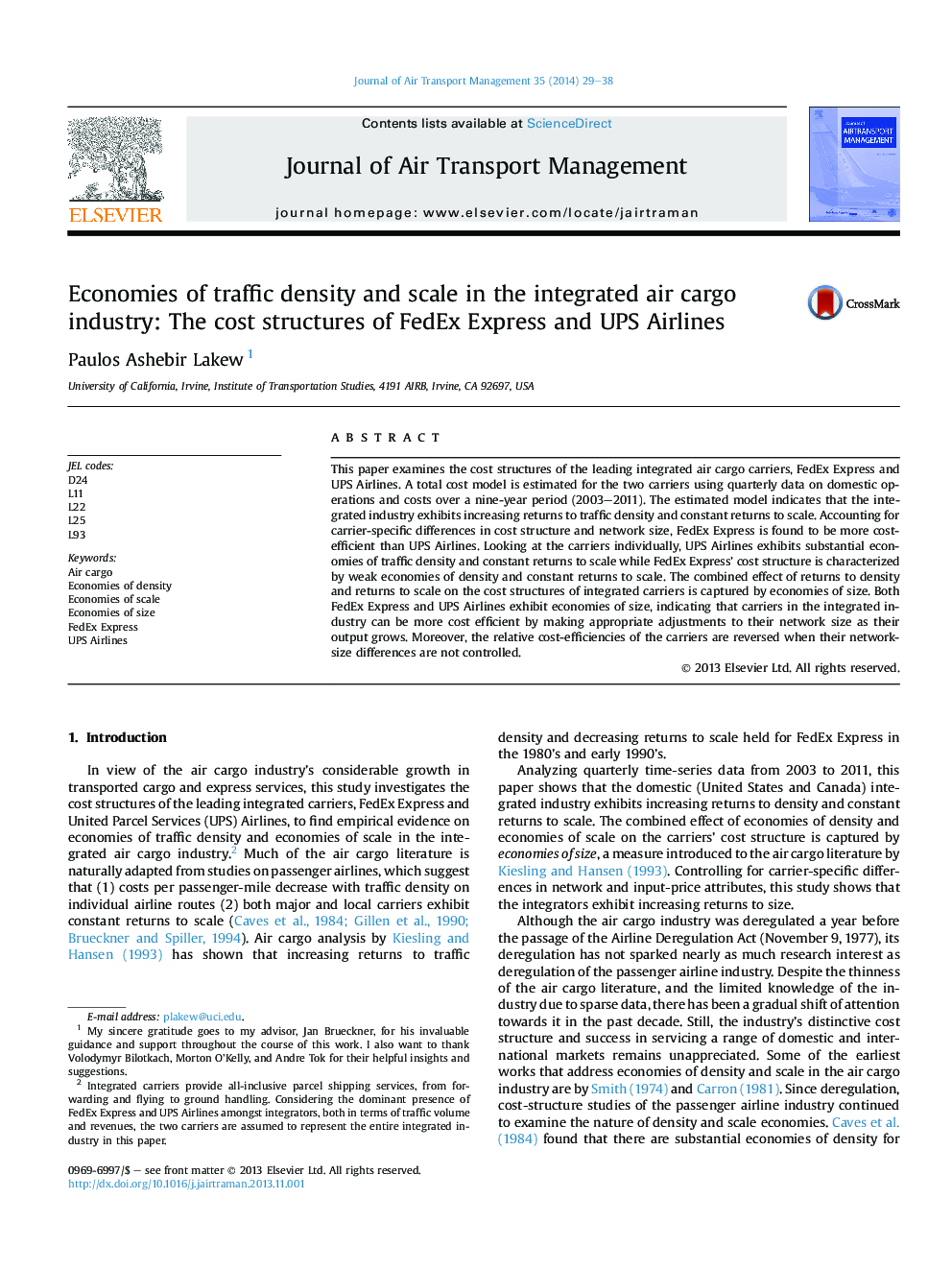| کد مقاله | کد نشریه | سال انتشار | مقاله انگلیسی | نسخه تمام متن |
|---|---|---|---|---|
| 1030868 | 1483582 | 2014 | 10 صفحه PDF | دانلود رایگان |
• A total cost model is estimated for two integrators, FedEx Express and UPS Airlines.
• Pooled together, FedEx and UPS exhibit economies of density and economies of scale.
• FedEx's cost structure reveals weak returns to density and constant returns to scale.
• UPS exhibits substantial economies of density and constant returns to scale.
• Individual-carrier and pooled results show economies of size hold for FedEx and UPS.
This paper examines the cost structures of the leading integrated air cargo carriers, FedEx Express and UPS Airlines. A total cost model is estimated for the two carriers using quarterly data on domestic operations and costs over a nine-year period (2003–2011). The estimated model indicates that the integrated industry exhibits increasing returns to traffic density and constant returns to scale. Accounting for carrier-specific differences in cost structure and network size, FedEx Express is found to be more cost-efficient than UPS Airlines. Looking at the carriers individually, UPS Airlines exhibits substantial economies of traffic density and constant returns to scale while FedEx Express' cost structure is characterized by weak economies of density and constant returns to scale. The combined effect of returns to density and returns to scale on the cost structures of integrated carriers is captured by economies of size. Both FedEx Express and UPS Airlines exhibit economies of size, indicating that carriers in the integrated industry can be more cost efficient by making appropriate adjustments to their network size as their output grows. Moreover, the relative cost-efficiencies of the carriers are reversed when their network-size differences are not controlled.
Journal: Journal of Air Transport Management - Volume 35, March 2014, Pages 29–38
